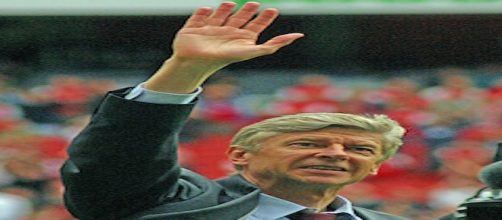Arsene Wenger has often been criticised for his lack of tactical flexibility in recent years. Wenger’s Arsenal returned to the top of the league yesterday for the first time since February 2014 with a 2-1 defeat of Everton to finish the week on a high after defeating Bayern Munich in mid week but have Arsenal changed tactically this season and if they have, is it enough to win the league for the first time in 12 years?
1. Have Arsenal added steel to the style?
The signing of goalkeeper Petr Cech in the Summer was lauded as a potential game changer in Arsenal’s title ambitions (https://uk.blastingnews.com/sport/2015/07/cech-arsenal-can-win-premier-league-title-00462519.html) and after a slow start that is proving to be the case, however what has not been widely acknowledged is Arsenal’s defensive solidity elsewhere.
In particular the emergence of Gabriel as an athletic, quick partner for Koscielny has proven invaluable as has Coquelin’s effervescent presence in front of the defence, both alleviating the disquiet of the fan’s at not recruiting a defensive midfielder in the Summer.
One of the most repeated criticisms of recent times is Arsenal’s perceived frailties without the ball. Often this has been misunderstood as Arsenal’s flair players lacking the work rate to press the ball, however the performance versus Bayern (https://uk.blastingnews.com/sport/2015/10/arsenal-handed-champions-league-blast-off-00612517.html) and Everton this week has shown this to be too simplistic a view. The change that has come is an increased acceptance for bigger games that letting the opposition have possession and counter attacking is a more effective way of playing.
2. Who plays where?
Arsene’s latest mid week tactical switch of bringing Ozil into a more central and deeper role is endemic of players changing position within the team to great effect and has enabled more fluency in the team.
Ozil is not the only player to change position for the better - Santi Cazorla is now established as a creative yet combative central midfielder, Walcott too has finally received his wish to play as a central striker adding to Wenger’s options upfront. Admittedly the Walcott experiment is as yet inconclusive and there are less successful examples such as Ramsay being pushed out wide, but with Walcott’s goal scoring underlining his continued development and the form of Ozil and Cazorla demonstrating Wenger has not lost his ability to craft players into positions.
3. Wenger himself
Wenger himself recognises that these are his last few years at Arsenal, stating that this is his third management phase after his early years of success, subsequently keeping the team in the top four through the years of building the Emirates stadium and lastly now hinting at the legacy he would like to leave.
That Wenger wants to leave Arsenal as a winner is undoubted and he has viewed the role of technology as key in the modern day tactical approach to sports, with Arsenal having purchased U.S sports analytics company StatDNA in 2012. Whether this has played a role in Arsene’s recent tactical changes is not clear, however what is evident is that ‘le professeur’ has shown a clearer mind in switching tactics this season.

